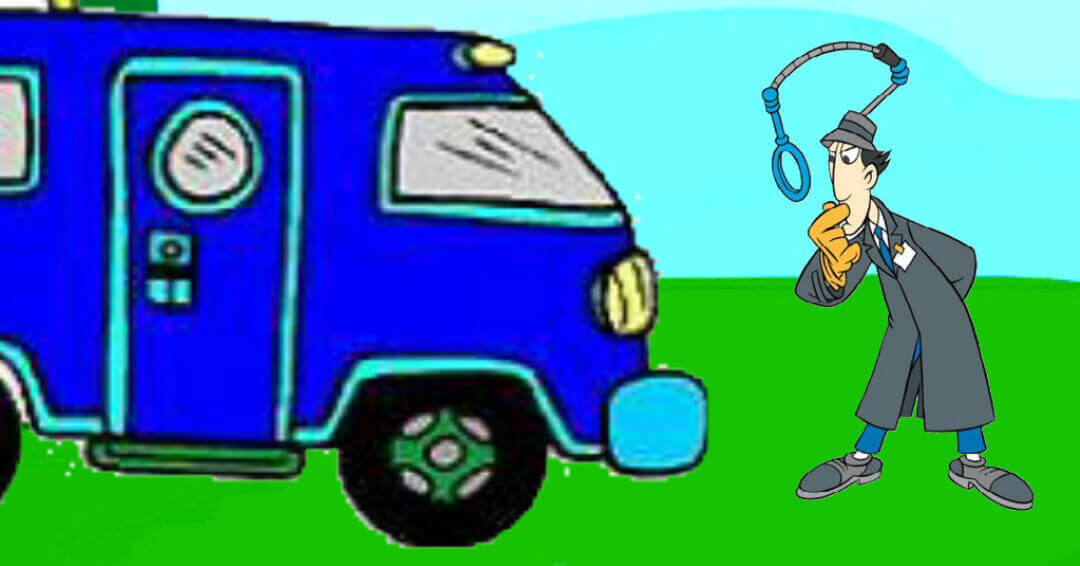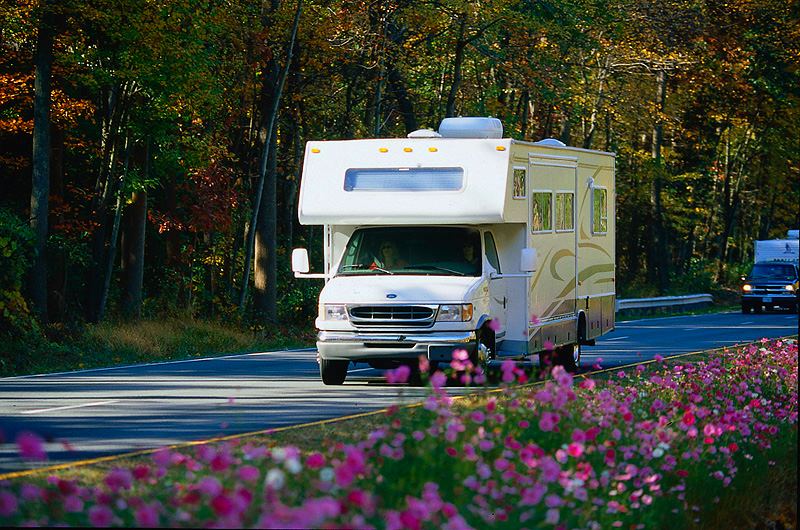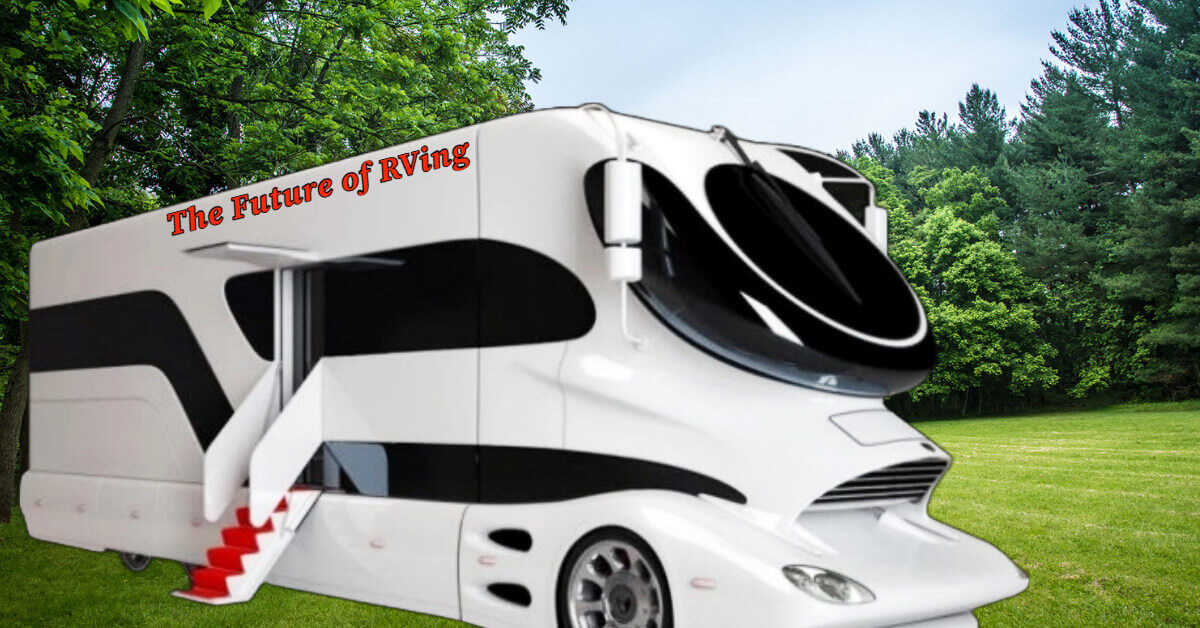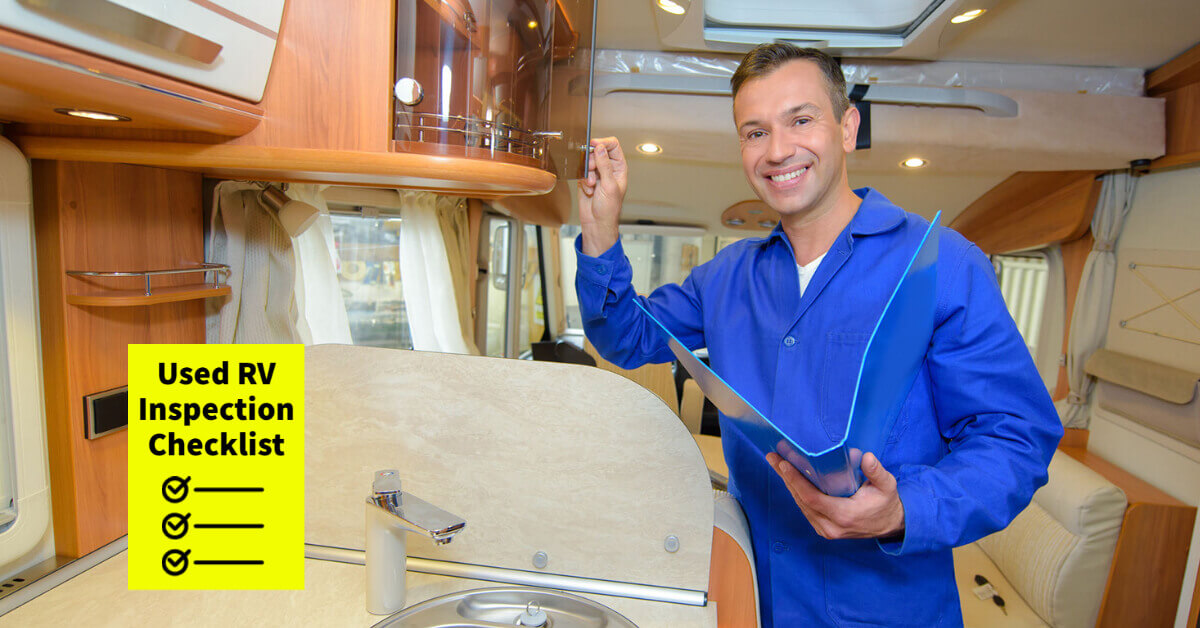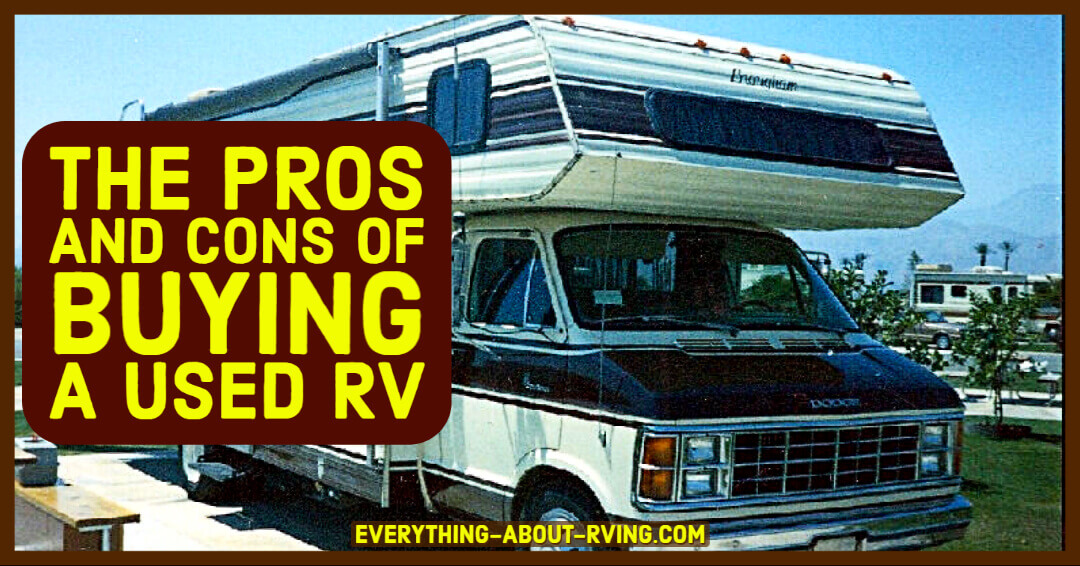- Home Page
- How to Do a Used RV Inspection
- Rv Inspection
Used RV Inspection
Section 2
Engine and Test Drive
In this section we discuss additional steps for inspecting a motorized RV
In this section of the Used RV Inspection Guidelines we are going to discuss areas to be inspected on Motorized RVs.
There are 4 important areas we are going to cover
Inspection of the Driver's Compartment
The Rattle and Squeak Special Report (also known as the "What the Heck Is That Noise?" Section).
Remember: these are just guidelines and may not cover everything, but they are a good starting point for your RV inspection.
Driver's Compartment
- If the RV is equipped with electrically operated driver and passenger seats do they operate properly. (recline, vibrate, heat up, give you a haircut and dress you in the morning)?
- Do all the engine gauges and/or dummy lights operate properly?
- Does the dash air, heating and defrost system operate properly?
- Do all the switches on the dash operate what they are suppose to operate?
- Does the cruise control work (you need to check this during your test drive, because you can sit in the driveway all day long with the engine running hitting that cruise control button and we guarantee nothing will happen)?
- Check proper operation of horn (if vehicle is equipped with air horns, the engine might have to be running before you check the horn, also pre-warn people that you are going to test the horn, so that you do not cause a unnecessary heart attack).
LEARN HOW TO RUN 2 RV A/Cs ON A 30 AMP CONNECTION
Engine Inspection
During this part of the RV inspection the engine is Off
Please note in this RV inspection section you may have to remove engine covers or physically crawl in engine compartments
- Visually check engine and engine compartment for signs of leaks such as oil, coolant, brake fluid etc.
- Visually check all belts and hoses for cracks and wear.
- Check the tension of all drive belts.
- Visually check all wiring for signs of shorts, burnt insulation etc (if the wires are emitting smoke while you are looking at them that is a good sign there is a problem).
- Visually check cooling system overflow reservoir, windshield washer reservoir, brake reservoir (if made of plastic) for cracks or wear (you may not think that the windshield washer is important until you go on your first outing in your RV and realize that every insect within a mile of the road you are traveling on will end up on your windshield).
- Check the fan shroud around the radiator for cracks or missing sections.
- If possible remove the air filter and inspect it. This will give you an idea of how well maintained the RV is. If it is filthy that will give you a pretty good idea that maintenance is not number one on the current owner's priority list. Same goes for the generator's air cleaner.
- Check all fluid levels, oil, coolant, brake fluid, washer fluid and power steering fluid. When checking the fluid levels also inspect the color of the fluids for proper cleanliness etc. Smell the engine oil for burnt smell (since the internet does not allow us to send you samples of smells, you are your own to figure out what burnt oil actually smells like).
- Special note on Automatic Transmission fluid. In most cases the manufacturer recommends that transmission fluid be checked with the engine running however that is not true in all cases, you need to check the Chassis owner's manual for the RV you are inspecting. If needed do this step in Part 2 of the Engine Inspection.
- Special note on Hydraulic Jack equipped RVs. The hydraulic jack reservoir is located in different areas, dependant on the make and model of the RV, again we refer you to the RVs owner's manuals. Once you find the hydraulic jack reservoir, check the fluid levels and the reservoir and hydraulic hoses for leaks and damage.
Diesel Engine specific checks
- Check the Fuel water separator for water. A small amount of water is normal excessive amounts of water can mean one of two things. The RV recently got a bad tank of fuel or the owner does check and drain the separator routinely. The location of the fuel water separator varies by RV model, check owners manual for location.
During this part of the RV inspection the engine is running
- Again look underneath the RV to see if you see any fluid leaking.
- Listen to the engine for any unusual sounds such as knocking noises. Here is another special note; there will be some knocking noises in a diesel engine there should be no knocking or pinging noises coming from a gas engine. So here is your rule of thumb some Knocking noise in a diesel engine IS OK any Knocking or pinging noise in a gas engine IS BAD.
- Look at the engine belts, do they appear to be properly adjusted? Too loose, Too tight or Just right?
- Look at all of the belt pulleys are any of them wobbling?
- Listen to alternator and power steering pump. Do you hear any grinding or whining sounds? Could be a sign of a bad bearing or in the case of a power steering pump, it could be low on fluid, have a leak or the pump is going bad.
- With driver compartment air conditioning on, is the air conditioning compressor making excessive noise? Is the compressor clutch slipping?
- Is the mechanical or electric radiator fan functioning properly? Is the mechanical fan clutch slipping?
- Check the accessories on the engine, does it appear that anything is about ready to vibrate off?
- Check the engine exhaust, is there white or black smoke coming out of the exhaust? Here we go again, you are going to see some black smoke coming out of a diesels exhaust, but it should not be excessive. Any black or thick white smoke coming out of a gas engine exhaust is not good.
- As best you can scan the exhaust system, do you visually see any leaks? Can you hear any exhaust leaks? (again, we cannot explain the sound of an exhaust leak, if you are mechanically inclined you will know what it sounds like).
- Remember to check Transmission fluid if it is suppose to be checked with engine running.
RV Inspection Diesel Engine specific checks
- Listen for any air leaks while engine is running. if equipped with air suspension go to all four corners of the RV and listen for leaking air.
- If equipped with air suspension, make sure RV looks level at all four corners (this only works on level ground), if one corner or one side of the RV is lower than the other it could indicate a problem with the air suspension system.
RV Inspection Test Drive
Please Note: This an important part of the RV Inspection and prior planning is required. You should pre-plan your Test Drive path, so that you will be traveling on both surface streets and highways. Why? because you want to know how it handles in stop and go traffic as well at highway speeds. You may find out that the RV you test drive is great on surface streets, but, when you take it on the highway it feels like you're on Mr. Toad's Wild Ride. It is better to discover this trait prior to purchasing it during the test drive portion of the RV inspection.
Prior to departure
- With engine running, scan the gauges and dummy lights, are there any warning lights? Do you have proper air pressure, oil pressure, is the amp gauge showing proper charging, etc. Throughout the test drive you should be scanning the dummy lights and gauges frequently for any problems.
- Prior to departure, check the emergency brake system for proper operation.
While driving
- Listen for any unusual engine, transmission or drive train noises.
- Test the cruise control for proper operation (yes, now is when you check the cruise control). Does it maintain the speed it is set for? Does it disengage when you depress the brake pedal slightly or when you hit the cruise off switch?
- Is the transmission shifting properly? does it shift hard? Do the engine RPMs increase greatly when the transmission is shifting to another gear?
- If equipped with overdrive, does the overdrive switch work properly?
- How does the brake pedal feel? Mushy? Travels too far before brakes engage? Vibrates or pulses when brakes applied? Any squeaking or grinding noise from wheels when pedal is depressed (depending on the material used on the brake pads or brake shoes, some minor squeaking may be normal, grinding noises are not)?
- When accelerating, is there any hesitation? Any excessive engine noise (pinging, knocking)? Any excessive white or black smoke coming from the exhaust system (this should be checked frequently during test drive)?
- Is the steering loose or sloppy (hard to keep the RV going straight down the road, do you have to excessively over correct the steering wheel to keep the RV going straight, this will be more noticeable at highway speeds)? When making turns do you hear any whining noises (possible problems with power steering pump)? Are you feeling vibrations through the steering wheel? If Yes, do these vibrations only occur at certain speeds?
- When driving down the road is the RV tracking properly?
- How is the ride? Too harsh (this is subjective, but if you hit a bump and your dentures fall out, or if you don't have dentures and your teeth fall out that would be considered too harsh)? Too soft (again, this is subjective, but if it feels like you are on a boat in rough seas and you need to take a Dramamine while going down the road, that would be too soft)? Depending on the type of RV being road tested, this problem could be resolved by increasing or decreasing the air pressure in the air suspension system. If in a non air suspension system, it could mean the shocks need to be replaced, the tires need balancing, the tires have defects or that is just the way the RV rides.
- Is there excessive sway while cornering or going down the road (side to side movement or the feeling that you are going to tip over when going around a corner)?
RV Inspection Diesel Engine specific checks
- Check for the proper operation of the exhaust braking system
- Monitor the air pressure gauge for large fluctuations in pressure, in particular when stopped at stop signs or traffic lights. Depending on the design of the engine and chassis, some pressure fluctuation can be normal. Refer to the Owner's Manuals for further information.
The RV Inspection Rattle and Squeak Special Report
OK, now for the fun part, what is rattling and squeaking inside the RV while going down the road? First, here is a fact about RVs, all RVs new or used, expensive or inexpensive will have some rattles and squeaks. If an RV is not rattling or squeaking, it is because it is either parked at a campground or in your driveway.
Now that we have gotten past this important hurdle, let's continue to eliminate what rattles and squeaks we can. Some rattles and/or squeaks can be eliminated by doing simple things like adjusting cabinet doors, putting padding between dishes and silverware etc.
During this portion of the test drive it would be nice to have a friend or family member with you to investigate and take notes on the locations of the rattles and squeaks while going down the road. Just hope that the rattle and/or squeak is not the 32" TV on the cabinet above your head working itself free from it's mounting so it can fall on your head. Have that person look around the RV as it is going down the road. Is the microwave about ready to fall off the cabinet in the kitchen.
Most of the time when you are test driving an RV, the owner has removed most of their dishes, silverware, spices and canned foods, because they are selling the RV. So, the rattles and squeaks are from the amenities in the RV itself. If you buy the RV and start putting your stuff in it you will undoubtedly create more rattles and squeaks.
Your goal during this part of the test drive is to determine if these rattles and squeaks are being caused by serious problems such as the cabinets coming off of the walls the appliances about ready to fall to the floor. If it is due to simple things like loose screws etc. you should not make this a reason not to buy the RV.
If you buy the RV, the first accessory you should buy is a rechargeable screwdriver. Why? just ask any veteran RVer, you are going to be spending a lot of time tightening screws during all of your trips. How many screws that need to be tightened depends heavily on what type of road you have been on, the rougher the road the more screws you will need to tighten.
Once, you have eliminated all the rattle and squeaks you can in your RV, rest assured that after awhile the ones you can't eliminate will be eliminated by your brain. It's like people who live by airports after living there awhile, they don't even hear the planes anymore (the brain is a wonderful thing). So, don't fixate on the rattles and squeaks.
We hope that these RV Inspection guidelines have been helpful to you. If you have not already reviewed the guidelines for inspecting the exterior and interior of the RV, you might want to hop over to Section 1 of the RV inspection Information.
Do you have any suggestions or comments on this topic? You can add them to this page by using the comments section located below.
